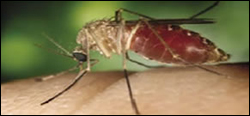Working Outside
 Working outside can sometimes involve extreme weather conditions and dangers from wildlife, sun exposure, and treacherous landscape. The National Institute for Occupational Safety and Health (NIOSH) performs research and offers information to help keep outdoor workers safe. Knowing the hazards is vital to working safely in the outdoors.
Working outside can sometimes involve extreme weather conditions and dangers from wildlife, sun exposure, and treacherous landscape. The National Institute for Occupational Safety and Health (NIOSH) performs research and offers information to help keep outdoor workers safe. Knowing the hazards is vital to working safely in the outdoors.
Occupations that involve working outdoors present many safety concerns that involve physical and biological hazards. The National Institute for Occupational Safety and Health (NIOSH) offers valuable information and extensive resources aimed at making outdoor workers safer.
 Millions of Americans work outside full-time or for just a portion of their workday. Naming only a few occupations gives an idea of the many types of outdoor environments workers face:
Millions of Americans work outside full-time or for just a portion of their workday. Naming only a few occupations gives an idea of the many types of outdoor environments workers face:
Outdoor dangers begin with the environment, which can present conditions such as extreme heat during the summer months. The sun's rays create dangerous ultraviolet (UV) radiation that can promote skin cancer, and they also generate high temperatures that can lead to heat stress. Underground, high ridges, and deep holes can all make for treacherous footing. Weather conditions such as lightning or high winds can imperil workers, and each year weather accounts for many worker deaths and injuries.
Biological elements abound in outdoor environments. These can include vector-borne diseases, venomous wildlife and insects, and poisonous plants. Mosquitoes and ticks can carry diseases such as West Nile virus and Lyme disease.
 Outdoor occupations often involve working with large machines that must interact with unpredictable terrain, resulting in a high risk of accidents. Indoor work sites can largely be controlled, but outdoor environments present hazards that can change from day to day—or even hour by hour.
Outdoor occupations often involve working with large machines that must interact with unpredictable terrain, resulting in a high risk of accidents. Indoor work sites can largely be controlled, but outdoor environments present hazards that can change from day to day—or even hour by hour.
Dangers also come in many other forms, including exposure to chemicals, like pesticides, or physical hazards such as falling objects, contact with electricity in downed power lines, or motor vehicle-related incidents.
NIOSH research identifies outdoor hazards and provides employers and workers with information they need in order to reduce the probability of accidents and exposures.
Current Features
Need info on a
different topic? See


